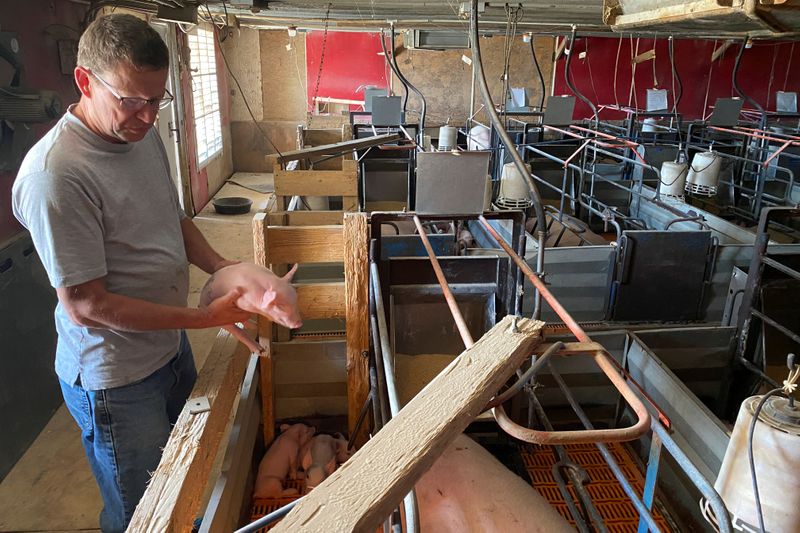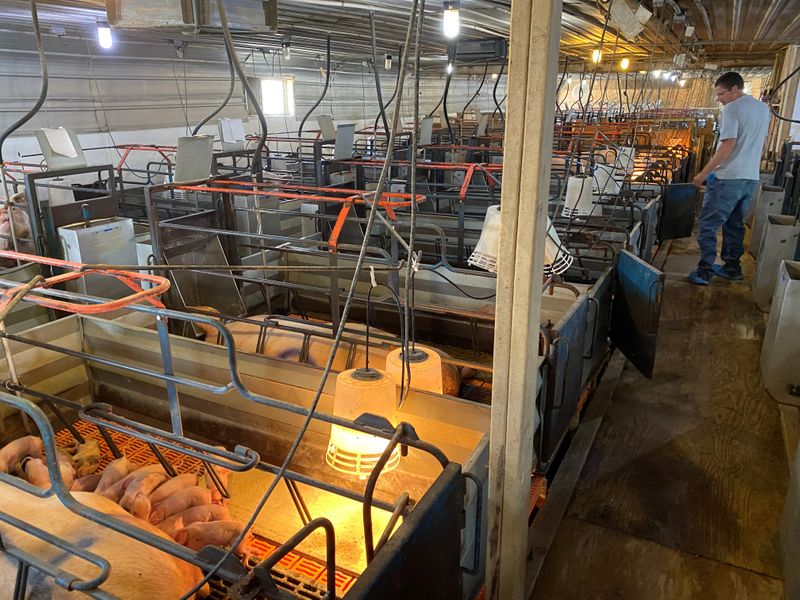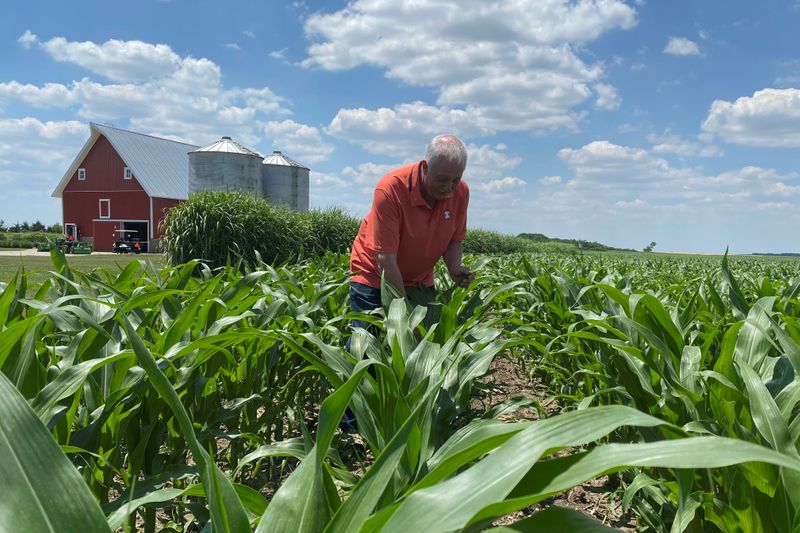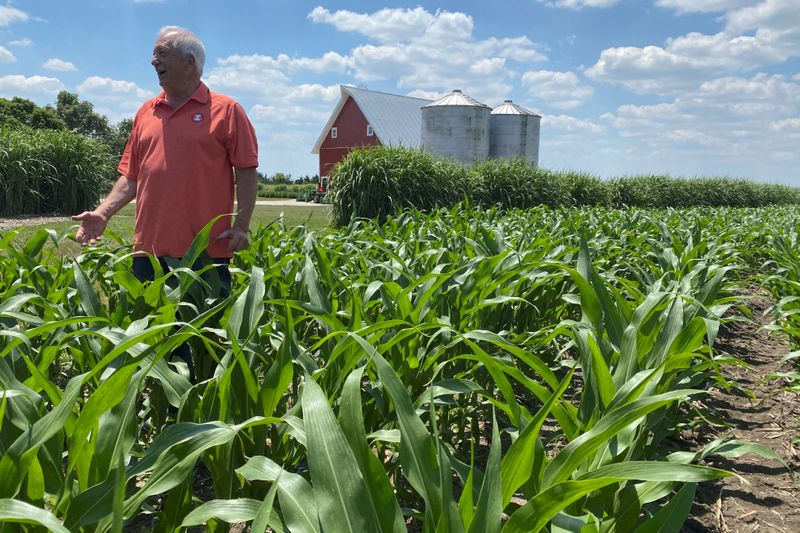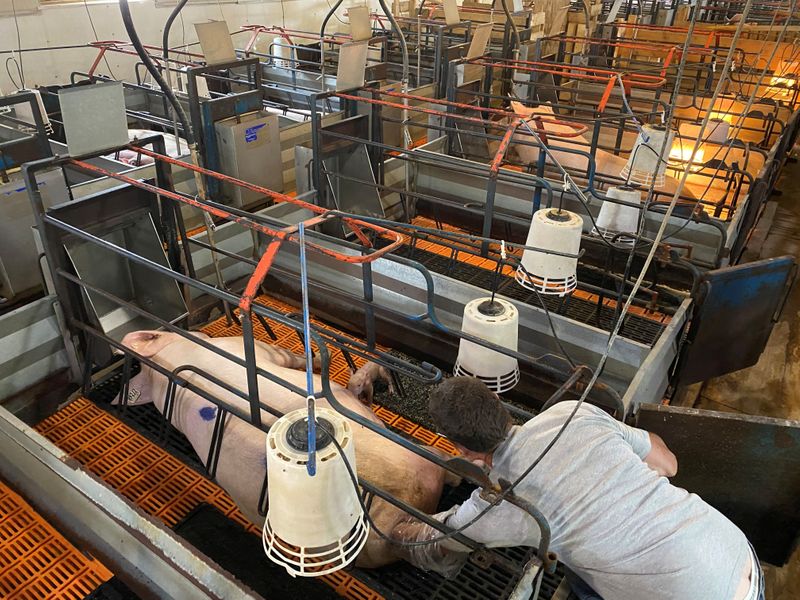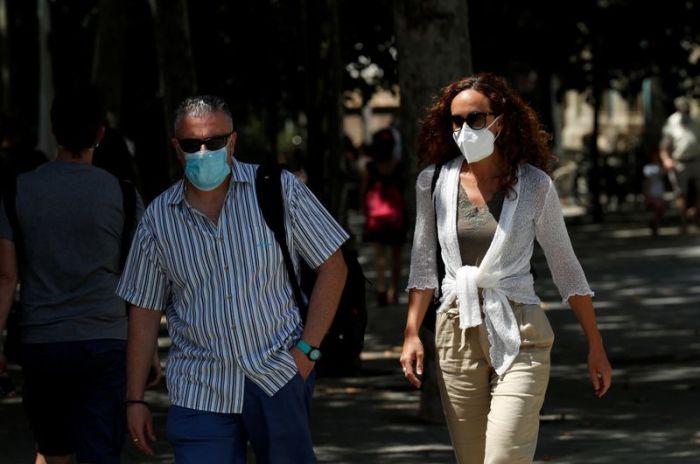CROPSEY, Ill. (Reuters) – When the coronavirus pandemic left Ron Mueller without a market for the 3,200 piglets his hog breeding operation cranks out weekly and facing huge bills, his local electricity provider offered to cut the Illinois farmer some slack.
Eastern Illini Electric Cooperative (EIEC), which powers Mueller’s farm and serves farmers, small businesses and residents across 10 rural counties, was willing to delay his bills as he scrambled to make ends meet.
“I want to pay my bills,” said Mueller, who had been forced to euthanize nearly 5,000 piglets in late March but still refused EIEC’s offer. “If I can’t afford to feed them (the pigs), I’ll just quit feeding them.”
Others in the area have been unable to avoid falling behind. From March to April, EIEC’s number of 90-day past-due accounts jumped by 50%.
Mueller’s dire choice between his pigs and paying the bills shows the indirect effects of the COVID-19 pandemic on rural areas of America like Cropsey in central Illinois, which in general have been less hard hit by cases of the highly contagious coronavirus than metropolitan areas.
Electric cooperatives, which serve about 42 million rural Americans, are a window of sorts into the far-reaching effects of the pandemic. Revenues of the cooperatives have taken a hit as the outbreak has curbed demand from commercial users and left many workers unemployed and unable to pay their bills.
Farmers like Mueller were hit as restaurants and schools shut down and demand for milk, bacon and pork fell. Exports dried up and meatpacking plants closed, with major facilities now running at about 75% capacity.
Oil prices plunged, so Midwestern ethanol production crashed.
Unemployment rates in largely rural states are lower than the national average but have risen rapidly. For instance, Oklahoma’s unemployment rate of 12.6% in May was lower than the national rate of 13.3%, but still a huge shift from the state’s 3.2% jobless rate in February.
“What we’re seeing here is the collateral damage,” said Jeff Hohn, chief executive officer of Kenergy Corp, an electric cooperative that serves 14 rural counties in northwestern Kentucky where manufacturing plants including paper mills and auto suppliers have been hit by shutdowns. “The concern here is whether some of those businesses will come back.”
Kenergy and other not-for-profit electric cooperatives serve rural areas that have already been buffeted by President Donald Trump’s trade wars.
“With the trade wars, our ag community has really endured some hard times the last few years,” said Rick Olesen, CEO of the Iowa Lakes Electric Cooperative (ILEC) in northern Iowa that serves farmers and three large ethanol plants that shut down as fuel demand collapsed. One of those plants has since reopened, but ILEC is projecting a 15% drop in revenue this year.
The National Rural Electric Cooperative Association (NRECA) estimates its members will suffer a revenue shortfall of $10 billion through 2021.
That matters because the electric cooperatives have high fixed costs serving far fewer customers per mile than for-profit utilities in cities and suburbs.
The NRECA has lobbied the U.S. Congress to adopt legislation allowing cooperatives to refinance government loans at lower interest rates to ease the pain. A bill was introduced in the House and Senate on July 2 that would do just that.
Association President Jim Matheson says the bill, if passed, could save the average cooperative $2 million in annual interest payments. Otherwise cooperatives might be forced to raise electricity rates to pay their bills.
“They (Congress) understand the challenges we face,” he said. “They are giving us a sympathetic ear, but it’s hard to get anything through Congress these days.”
‘AT WHAT PRICE?
EIEC customer Jim Niewold said the pandemic has impacted every single market for the corn and soybeans he grows on around 2,100 acres of land in Loda, Illinois, and many farmers are stuck sitting on last year’s crop.
“The question is where are we going to put this year’s crop if something doesn’t change?” he said. “Eventually I’m sure we’ll get rid of all of our product – but at what price?”
Niewold, 65, has low debts and says he should be able to weather the crisis, but he and EIEC’s CEO, Bob Hunzinger, both worry about the impact on younger farmers still paying off loans for land or equipment.
Hunzinger is also concerned this may further erode the local rural population.
“You’ll see farmhouses around here that have been lived in for over 100 years,” he said. “But next year, they might be empty.”
Jennifer Meason, CEO of electric cooperative Cotton Electric, which serves eight rural counties in southwestern Oklahoma, says many of the people her cooperative serves have been laid off from the oil and gas industry.
Overdue accounts, which normally average a combined $30,000, spiked to $240,000 in the spring before unemployment benefits started to trickle in, she said.
Cotton Electric also serves oil and gas producers and Meason estimates sales could fall nearly 10% this year.
“We’re still wondering whether it’s going to be just a few months or will it be into 2021 before some oil producers get close to normal production,” she said.
At Kenergy in northwestern Kentucky, electricity sales have been down nearly $5 million, or 15%, per month.
CEO Hohn said unless the cooperative is able to refinance its federal loans to lower costs, he will face a hard choice.
“If things stay like this, we will have to go for a rate increase,” he said. “Not this year, but probably next year.”
He hopes Congress will take action so he can refinance his loans, but worries the cooperatives may not get heard in the midst of a national crisis.
“There’s only so much money to go around and everyone’s in line right now,” Hohn said.
(Reporting by Nick Carey in Cropsey, Ill.; Editing by Joseph White and Matthew Lewis)

